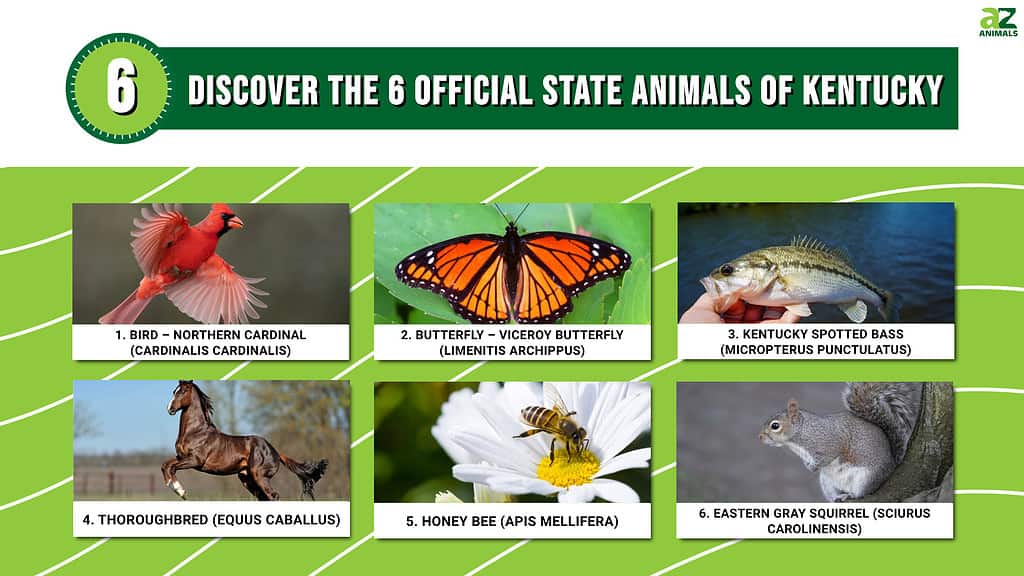
Kentucky’s official state animals are a diverse group of creatures that represent the state’s natural heritage. Each animal has a unique story and cultural meaning, from mesmerizing butterflies to graceful horses.
As symbols of Kentucky, these animals hold a special place in residents’ hearts plus offer a fascinating glimpse into the state’s history and natural wonders. So let’s take a closer look at Kentucky’s six official state animals. Get ready to learn more about what makes them unique and why they represent Kentucky.
What is an Official Animal?
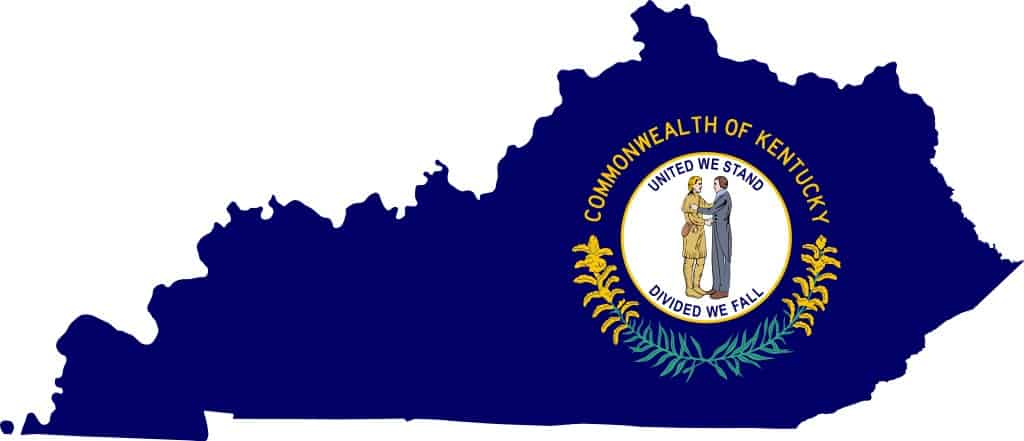
Kentucky chooses its official state animals by considering their contributions to the state’s legacy.
Before diving into Kentucky’s official state animals, let’s first define what it means to be an official animal. An official animal is a symbol of a state or country for cultural, ecological, or economic significance. These animals represent a region’s natural heritage and identity and are a source of pride for its residents.
Whether chosen for historical, mythological, or ecological importance, state animals celebrate a region’s connection to its natural environment, plus highlight the need for conservation efforts to protect its wildlife.
Official State Animals Of Kentucky
The official six Kentucky state animals offer a captivating glimpse into its cultural and natural history, representing its unique character and ecological diversity.
1. Bird – Northern Cardinal (Cardinalis cardinalis)

The northern cardinal is the official state bird in Kentucky and in other states.
©Rob Palmer Photography/Shutterstock.com
The northern cardinal has the remarkable distinction of being designated as the state bird in seven distinct states, including Kentucky.
The species typically reach a length of 7 to 9 inches, and their tails are elongated. They are recognized by their distinctive crest of feathers on the top of their heads, which is sharp and tall. Additionally, they possess an orange beak with a cone-like shape. The male cardinals exhibit bright red plumage with a black face, whereas females are brownish-gray, featuring reddish wings, a tail, and a crest.
A territorial songbird, the male northern cardinal, defends his territory with a loud and distinct whistle while perched atop a high location, such as a tree. Any other male who enters his territory is pursued and chased off. Interestingly, the cardinal may sometimes confuse his reflection on reflective surfaces with that of another male, leading him to fight his own reflection with unwavering aggression.
The northern cardinal has a varied diet comprising insects like beetles, grasshoppers, ants, spiders, and snails. The bird also feeds on vegetation, including seeds from grass and weed, flowers, leaf buds, and wild fruits and berries.
These beautiful birds can be found in Kentucky’s diverse range of habitats. These habitats include forest clearings, swamps, and city parks, as long as dense bushes are available for nesting.
The northern cardinal was named after Catholic cardinals because of its striking red color, which reminded early American settlers of the red cassocks worn by religious leaders.
Why is the Northern Cardinal the State Bird of Kentucky?
The northern cardinal is uniquely chosen as the official state bird of Kentucky twice, in 1926 and again in 1942, with both laws making it official. The bird’s selection was based on its abundance and its native status in Kentucky, where it can be observed throughout the year.
2. Butterfly – Viceroy Butterfly (Limenitis archippus)
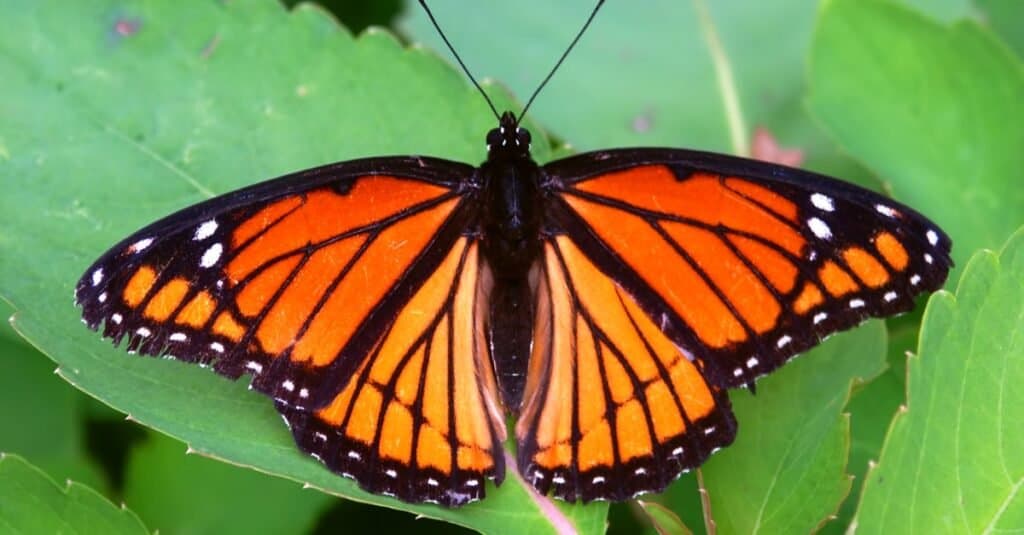
Although it may look like the monarch, Kentucky’s official
butterfly
is the viceroy.
©Jason Patrick Ross/Shutterstock.com
Kentucky’s official butterfly is characterized by its striking dark orange color with black veins and a row of white spots that outline its wings. Interestingly, it closely resembles the pattern of the monarch butterfly but with a distinguishing black stripe running horizontally across its back wings. And before its metamorphosis, the viceroy caterpillar has a unique white and olive brown coloration. The adult butterfly’s wingspan ranges between 2 1/2 to 3 3/8 inches.
Unlike their twin butterfly species, the monarch, viceroy butterflies do not undertake seasonal migrations. If you observe a viceroy and a monarch in mid-flight, you can differentiate between them by their characteristic modes of movement. Monarchs glide gracefully through the air while viceroys flap their wings more rapidly. The viceroy’s flight path is also unpredictable in comparison to that of the monarch.
The primary source of nutrition for all butterflies is nectar, which is also true for the viceroy butterfly. Nevertheless, viceroy butterflies have a unique palate and have been known to consume dung, carrion, and fungus as well.
As viceroy butterflies lay their eggs on these types of leaves, they can usually be found in environments that support these tree species, such as marshes, wetlands, and meadows.
Male viceroy butterflies exhibit territorial behavior, establishing their perching spot near a willow tree and patiently waiting for a female viceroy to appear within their range of sight. They diligently investigate anything entering their territory, attempting to mate with any female viceroy butterfly while chasing off unwanted intruders.
Why is the Viceroy Butterfly the State Butterfly of Kentucky?
The viceroy butterfly is the state butterfly of Kentucky because it has significant cultural and ecological importance. The viceroy butterfly is a symbol of beauty and grace, and it plays a vital role in Kentucky’s ecosystem as a pollinator and food source for other animals. The Kentucky state legislature recognized the significance of the viceroy butterfly and designated it as the official state butterfly in 1990.
3. Fish – Kentucky Spotted Bass (Micropterus punctulatus)
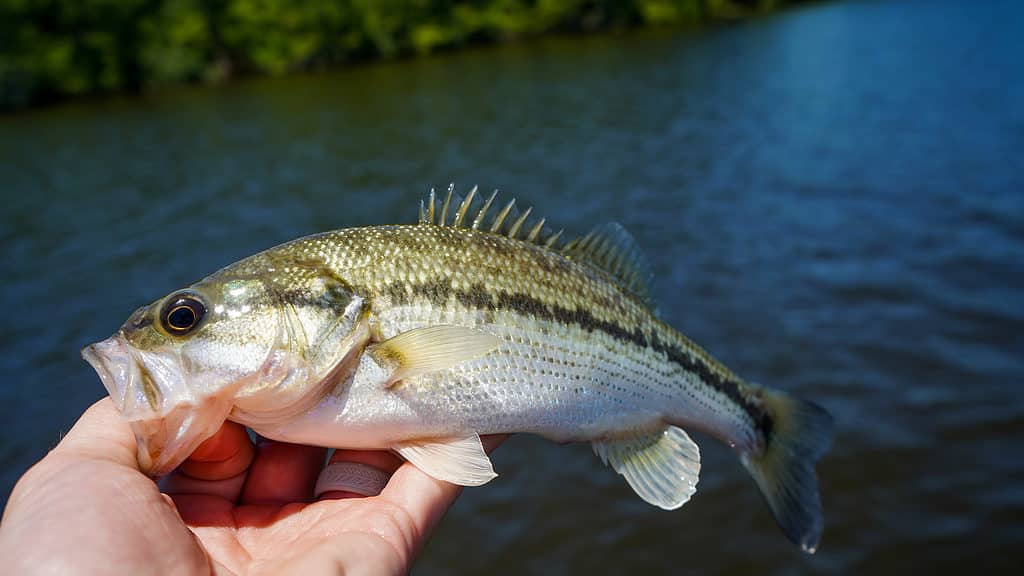
The Kentucky state animal fish, the spotted bass, is also known as the Kentucky bass.
©Maclane Parker/Shutterstock.com
Although Kentucky spotted bass and largemouth bass may share a resemblance, several unique features differentiate the two. Notably, Kentucky spotted bass can be identified by horizontal rows of small black spots on their lower side, whereas largemouth bass lacks this feature. Furthermore, adult Kentucky spotted bass exhibit a shallow notch between their spiny and soft dorsal fins, unlike their largemouth counterparts, which display a deep notch. Lastly, Kentucky spotted bass have a circular patch of teeth on their tongue.
In Kentucky, adult spotted bass commonly measure between 8 to 15 inches in length, weighing in at around 8 ounces to 2 pounds.
Kentucky spotted bass is a sought-after game fish, prized for its delicious taste. They are similar in taste and texture to the largemouth bass or crappie, being mild white fish with a firm texture. Many consider the Kentucky spotted bass the best-tasting fish found in the state!
These fish have a lifespan of approximately 6 years and typically spawn during the months of April to May in environments similar to those utilized by smallmouth bass. During this time, male Kentucky spotted bass construct their nests in gravel or other suitable substrates, then lure females into depositing their eggs.
The diet of spotted bass primarily consists of crayfish, aquatic insects, and small fish.
During the fall season, anglers pursuing Kentucky spotted bass often frequent the channel drops in the submerged Barren River. These fishing spots are highly favored among anglers for their exceptional potential in catching Kentucky spotted bass.
Why is the Kentucky Spotted Bass the State Fish Of Kentucky?
In 2005, the Kentucky state fish was declared to be the spotted bass due to its high prevalence in the Ohio River and southern tributaries, which either arise or flow through the state. This fish can be found in all of Kentucky’s river drainages and is especially prevalent in the streams in the state’s northeastern region.
4. Horse – Thoroughbred (Equus caballus)
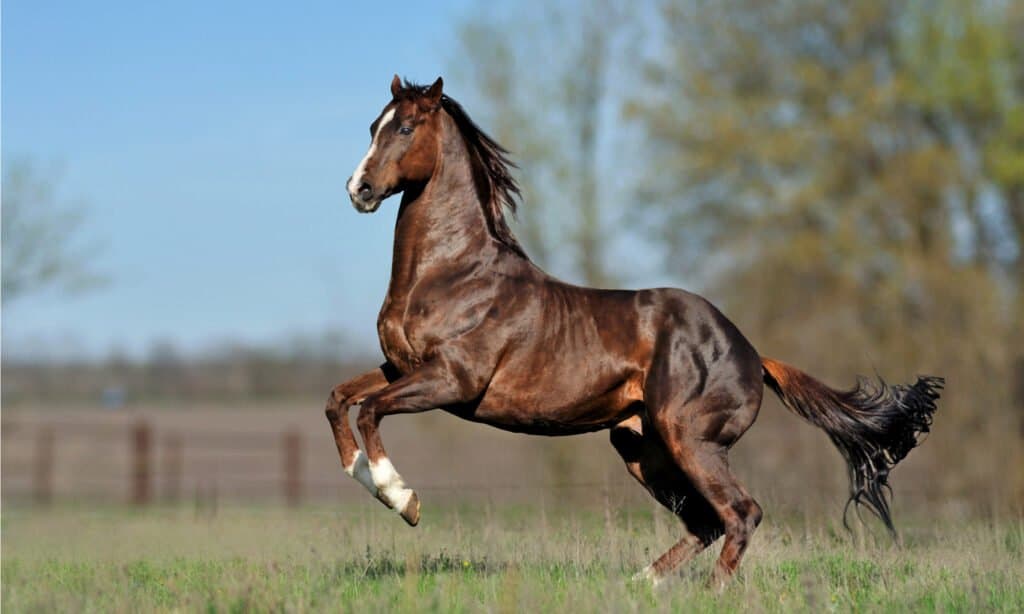
Kentucky’s official state
horse
is the thoroughbred.
©Anaite/Shutterstock.com
In Kentucky, thoroughbred horses are categorized as “hot-blooded” and renowned for their remarkable agility, energy, and speed.
The thoroughbred horse, known for its athleticism, has a distinctive physique characterized by a slim frame, broad chest, and a short back. The species’ breeding for speed has resulted in various prized physical attributes such as a lean body, a chiseled head, and long legs, all of which enable the thoroughbred to achieve high speeds. These magnificent horses usually have a height of 16 hands (64 inches) and weigh approximately 1,000 pounds when fully mature. Thoroughbreds are typically seen in chestnut, black, gray, or brown shades.
When it comes to behavior, some thoroughbreds are too lively and spirited for novice equestrians. However, these horses have a strong work ethic and are highly intelligent. With the right training from a confident, experienced handler, they can excel in various equine sports.
Despite being primarily bred for racing, thoroughbreds are versatile horses with athleticism, making them suitable for other disciplines like show jumping and combined training. Retired and retrained racehorses have also excelled in various areas, such as dressage, youth show events, and family riding. Larger thoroughbreds are favored in competitions such as dressage and hunter/jumper, while smaller horses are ideal for polo.
Back in 2006, a two-year-old colt named the Green Monkey broke the record for the highest price ever paid for a thoroughbred at an auction, fetching an astounding sum of $16,000,000.
Why is the Thoroughbred the State Horse of Kentucky?
In 1996, the state of Kentucky officially declared the thoroughbred as its state horse. The Kentucky quarter prominently features this breed of horse on the reverse side alongside the stately mansion, Federal Hill. The famous Kentucky Derby also exclusively features thoroughbred horses.
Kentucky boasts many of the top thoroughbred breeding farms in the United States, and this breed has substantially impacted the state’s economy and cultural heritage, bringing over $3 billion to Kentucky. Given these factors, it is no surprise that the thoroughbred was a natural choice for Kentucky’s state horse designation.
5. Insect – Honey Bee (Apis mellifera)

The honey bee is the official Kentucky state insect.
©Jack Hong/Shutterstock.com
The honey bee has been designated as the official state insect in 17 states of the United States, including Kentucky.
Honey bees have a light brown color and are approximately 0.6 inches long. Their bodies are oval-shaped and feature brown bands along with golden-yellow hues. While there is some body color variation among honey bee species, most of them possess a combination of light and dark bands.
These stripes have an important role in the survival of honey bees, as opposed to other species that seek to hide from predators when they are nearby. The brightly colored bodies of honey bees warn predators or honey thieves about their stinging capability.
Like several other bee species, honey bees are social insects living in large colonies that can number in the thousands. Within a honey bee colony are three distinct types of adult bees: infertile female workers, male drones, and the queen. Each of these bees plays a vital role in maintaining the colony’s overall health and productivity.
Honey bees have a diverse diet, which includes nectar and pollen.
Honey bee hives can be found in various locations in the wild. You may find them in such places as in the holes of trees or rock crevices. These locations provide the ideal shelter and protection that honey bees require to maintain and grow their colonies.
Why is the Honey Bee the State Insect of Kentucky?
In 2010, the honey bee was declared Kentucky’s official state insect due to its critical role in agriculture. Honey bees are essential pollinators for many crops, including fruits, vegetables, and nuts. They are an indispensable part of modern agriculture. They are the most industrious of Kentucky’s state animals.
The honey bee’s importance to agriculture goes beyond just pollination. Honey bees also produce honey, beeswax, and other products used in various industries, such as cosmetics, pharmaceuticals, and food production. Honey is also a popular sweetener and has been used in human diets for centuries. The honey bee’s role as Kentucky’s official state insect highlights their crucial role in the state’s economy and food production.
6. Wild Game Animal – Eastern Gray Squirrel (Sciurus carolinensis)

The eastern gray
squirrel
is the Kentucky official state animal under the “wild game” category.
©iStock.com/Nigel Harris
Last on the list of Kentucky’s official state animals is the eastern gray squirrel. It’s not hard to spot them since they are found all over the state.
The eastern gray squirrel is a fascinating animal known for its grayish body, often accented with black, white, or brown fur. In addition, these squirrels have a distinctive whitish belly that helps to set them apart from other species. Interestingly, some gray squirrels are entirely black, a condition known as melanism.
The eastern gray squirrel’s most recognizable feature is its bushy tail, which can vary in color from brownish to a pale gray hue. These squirrels have been known to weigh around 1.5 pounds and can reach a length of up to 20 inches.
These squirrels are known for their energetic and curious nature and can be quite aggressive when necessary. Eastern gray squirrels are very agile and quick. When moving and jumping amongst the treetops, they are always alert and look out for potential dangers.
One interesting behavior of the eastern gray squirrel is that they are scatter-hoarders. In other words, they store vast amounts of food for the future, making several thousand caches per season. This hoarding behavior helps them to survive the winter months when food sources may be scarce.
Eastern gray squirrels mainly feed on nuts, buds, and flowers. They are commonly found in mature, dense woodland ecosystems that contain large mast-producing trees like hickories and oaks. These forests provide an abundant food source for these squirrels. However, these squirrels can also be seen in urban environments such as parks and backyards near human settlements and in rural environments like farmlands.
Why is the Eastern Gray Squirrel the State Wild Game Animal of Kentucky?
Early Kentucky settlers relied on eastern gray squirrels for food. The squirrels were a source of sustenance in the absence of larger game like wild turkeys, elk, bears, and deer during the 19th century. To provide for their families, hunters would hunt small game such as squirrels. Squirrels were common in burgoo – a stew made of meat and vegetables cooked over an open fire using iron kettles.
Presently, squirrel hunting remains a lawful activity in Kentucky, reflecting its historical importance as a food source. The eastern gray squirrel was officially declared the state’s official wild animal game species on June 13, 1968, by the Kentucky General Assembly.
The photo featured at the top of this post is © Maclane Parker/Shutterstock.com
Thank you for reading! Have some feedback for us? Contact the AZ Animals editorial team.







